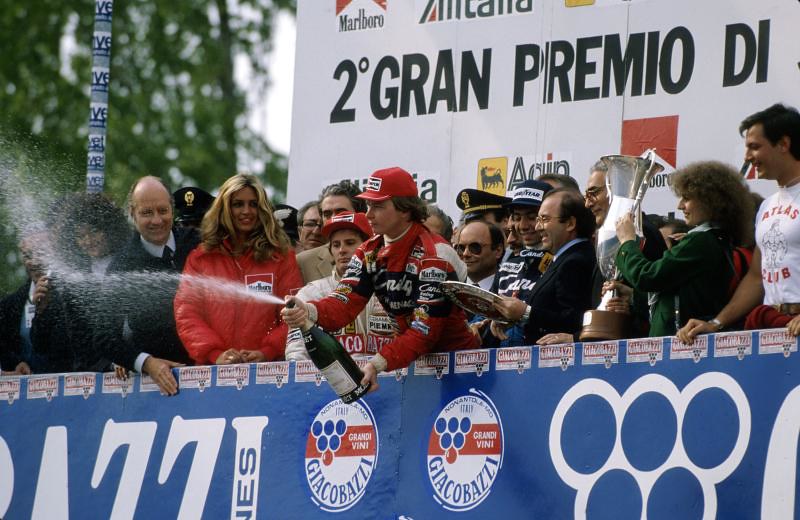The 1982 San Marino Grand Prix Boycott
The 1982 San Marino Grand Prix controversy started when Formula One season started off in Brasil. After Nelson Piquet and Keke Rosberg were disqualified from the Brazilian Grand Prix for running their cars underweight, the Formula One Constructor’s Association (FOCA) teams announced they would boycott the next race, the San Marino Grand Prix, in protest.
This left only the manufacturer teams – Ferrari, Renault, and Alfa Romeo – plus some smaller teams like Osella and Toleman on the grid at Imola. The Tyrrell team, despite being part of FOCA, decided to break the boycott after securing sponsorship from Italian companies who wanted to see the cars race at Imola.
The Ferrari Team Orders Controversy
With most of the top teams absent, Ferrari dominated qualifying at Imola, locking out the front row with Didier Pironi ahead of Gilles Villeneuve. The race quickly turned into a battle between Ferrari and Renault, with Ferrari looking set to score an easy 1-2 finish on home soil after Alain Prost and Rene Arnoux retired.
But then came the controversy. With Villeneuve leading Didier Pironi in the closing laps, Ferrari put out a ‘SLOW’ signal to tell the drivers to hold position. Villeneuve thought this meant the order of cars would remain unchanged to the end. But Pironi saw it as an instruction only to slow down, not to freeze the position.
On the final lap, Pironi shocked Villeneuve by overtaking him to grab a surprise victory. Villeneuve was furious, accusing Pironi of breaking a gentleman’s agreement. He vowed never to speak to Pironi again.

The Fallout from Ferrari Team Orders Saga
The press painted Pironi as the villain who had stolen victory from Villeneuve. Two weeks later, Villeneuve was killed in a crash while trying to beat Pironi’s time during qualifying at Zolder. Pironi himself suffered career-ending injures later that season in Germany.
The scars from Imola lingered for years in Formula One. It created a climate of distrust within teams about team orders and fuelled the ultra-competitive, no holds barred attitude between teammates and rivals in the turbo era.
1982 San Marino Grand Prix Controversy and it’s impact on Prost and Senna conflict
When Alain Prost and Ayrton Senna became teammates at McLaren in 1988, the epic rivalry between the consummate Frenchman and Brazilian upstart was already inevitable. But the controversy of 1982 heightened the tensions.
Like Pironi, Prost was a French driver who won grands prix with calculated precision. Senna was an aggressive flatout racer like Villeneuve who accused Prost of not always playing fair, even though Prost had more experience and technical knowledge.
The 1989 San Marino Grand Prix
In 1989 the two title rivals met at Imola again, where Senna claimed Prost had reneged on an agreement not to pass into the corner, a mirror of Villeneuve’s words against Pironi.
Their rivalry raged through 1989 and 1990, with several controversial clashes. But the 1989 San Marino Grand Prix was the beginning of the end for the McLaren partnership, setting the tone for their no holds barred relationship.
Prost and Senna: 1982 Rivalry Relived
So while passion and national pride fueled the Prost-Senna battle, the events of 1982 raised the stakes. Unforgiving driving standards meant trust between teammates was fragile. And the Villeneuve-Pironi animosity showed the dangers when team orders fail.
The 1982 San Marino Grand Prix was a perfect storm that changed Formula One’s competitive mindset. Its echoes strengthened the epic Prost-Senna rivalry into one of F1’s most iconic yet turbulent championship fights.
Little did Gilles Villeneuve and Didier Pironi realize from that one fateful race, their names would forever be etched into Formula One lore.

